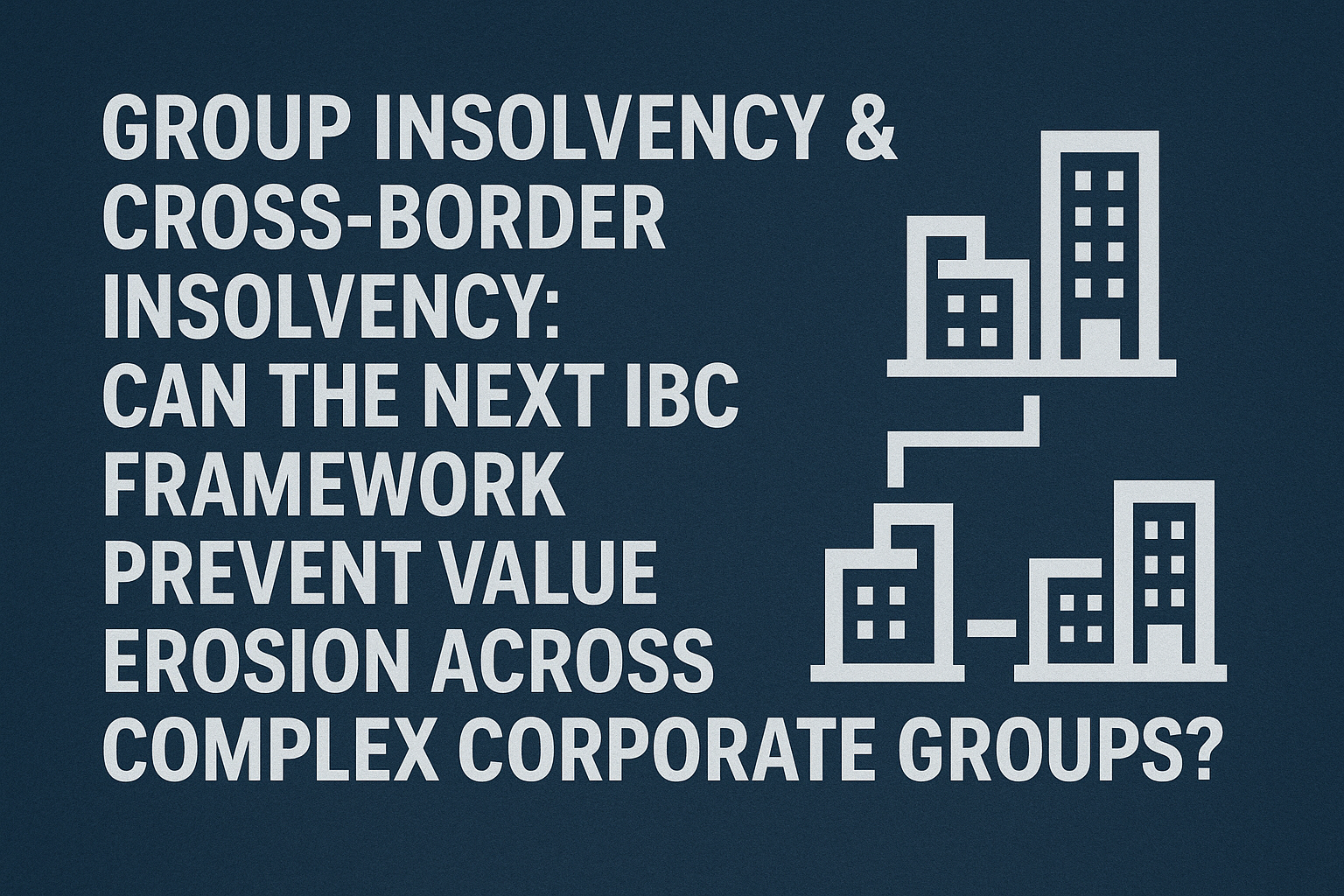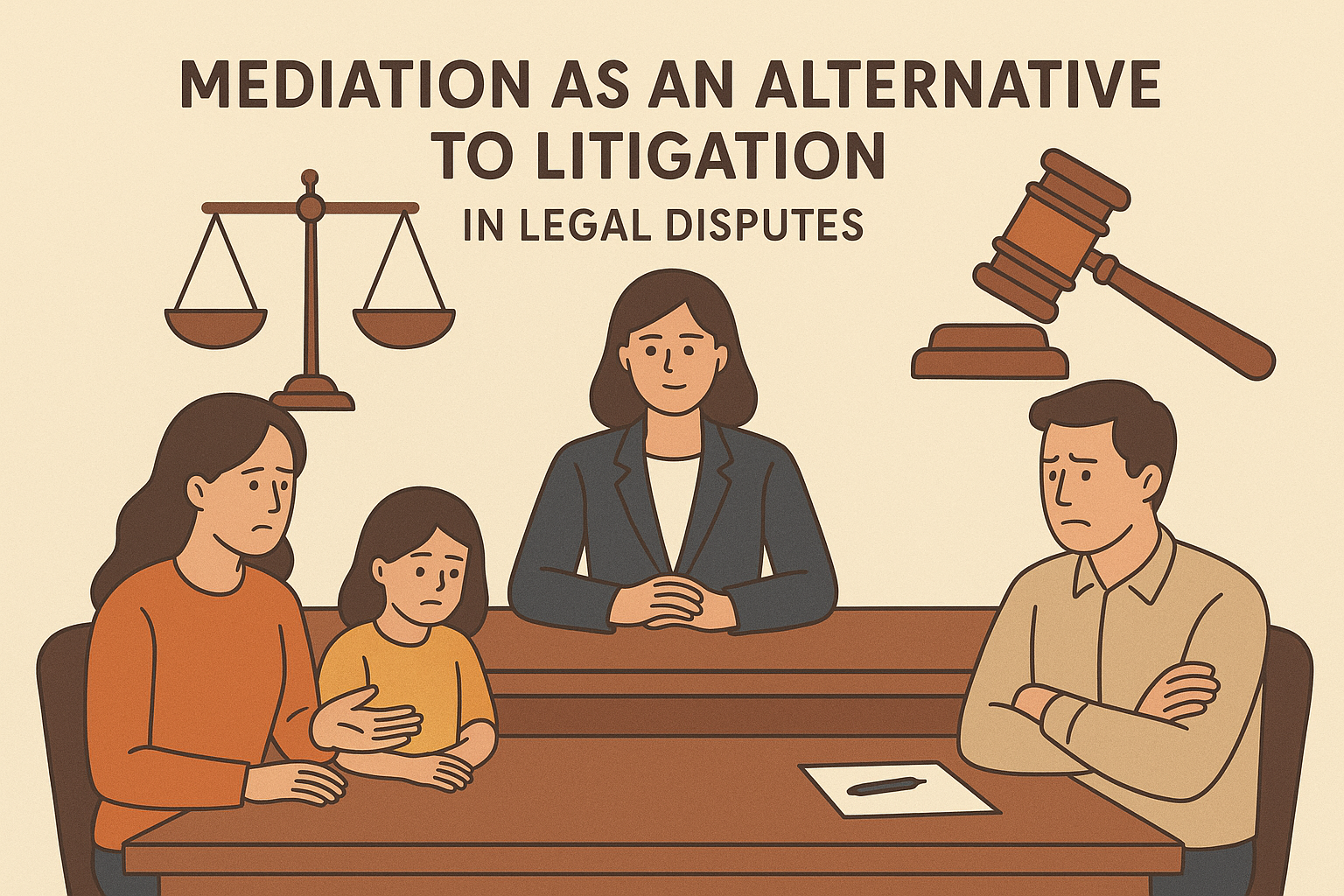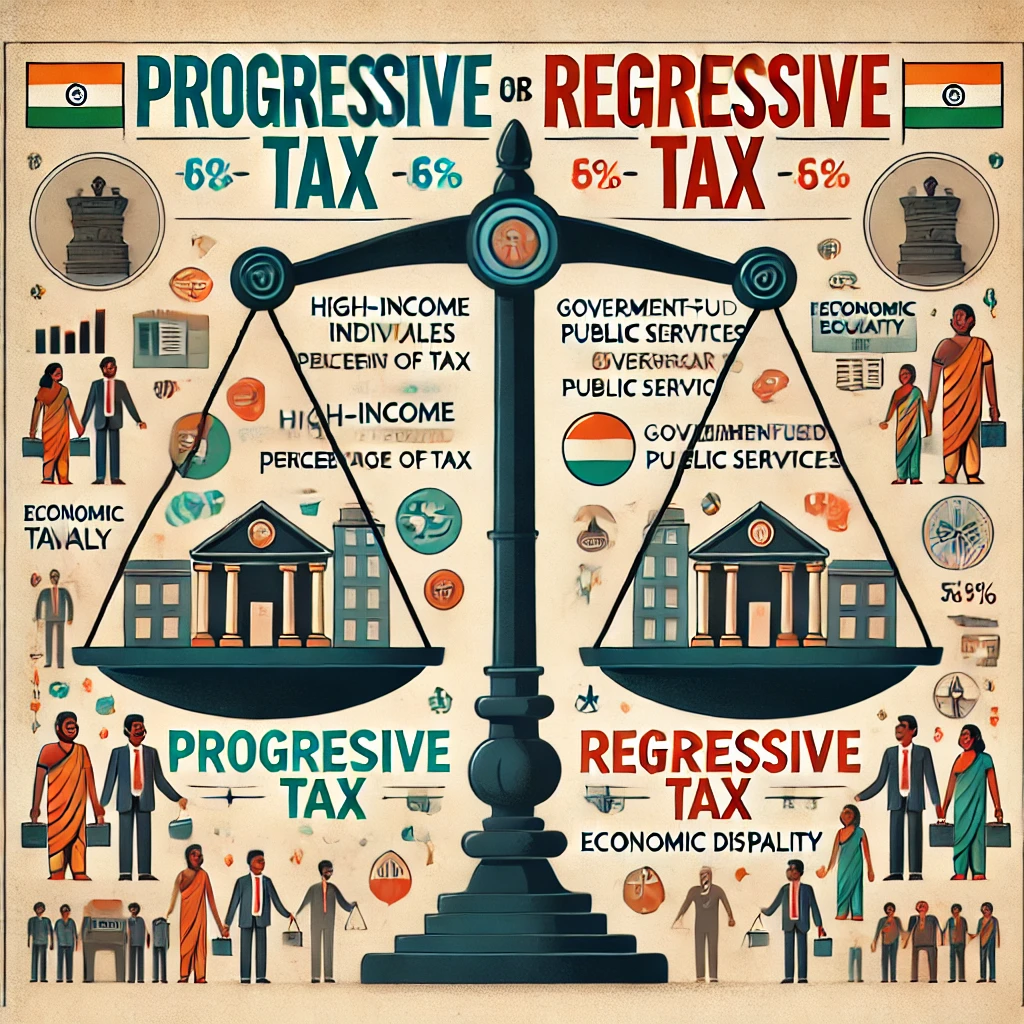by Himanshu Parmar of CNLU
Introduction
In 2016, with the enforcement of the Insolvency and Bankruptcy Code in India, the act was declared as one of the most innovative legislative intrusions in corporate governance. With a patchwork of laws in place, it ensured value maximization, creditor empowerment, and time-bound resolution. But over the years after its introduction it has become clear through practical experience that there are major limitations in its application, particularly when it comes to complex enterprise groups and multinational corporate structures. Most contemporary corporations are not stand-alone legal entities but rather networks of subsidiaries, affiliates, and holding companies that operate in multiple jurisdictions. The result of a failed unit tends to instigate the financial troubles of other units, forming a domino effect that a unit-based insolvency framework cannot properly resolve. The IBC as it is now views each company as a separate debtor, separate proceedings, separate resolution professionals and separate creditor committees are required[1]. Lack of a single process results in cost duplication, non-consistent rulings and the ultimate loss of economic value. These gaps are proposed to be addressed in the proposed IBC (Amendment) Bill, 2025 which proposes frameworks to group insolvency and cross-border insolvency. Whether it can effectively balance the conflicting requirements of efficiency, sovereignty, and creditor protection will make it or break it.
The Problem of Fragmentation and Value Erosion
Few episodes allow as clearly visualizing the role of fragmented insolvency as the case of the IL&FS crisis in 2018, involving more than 340 group entities, active in other fields. The lack of legal provisions on concerted resolution required the adoption of an ad hoc disposal of assets through reactor-freezing and joint management, at least, on equal footing, by the National Company Law Appellate Tribunal (NCLAT) rather than the legislative provisions. This was also the case in the State Bank of India v. Videocon Indus Ltd.[2] under the companies proceedings, it was discovered that the assets, liabilities, and business activities of the group were closely intertwined as one could not distinguish the three (NCLT, 2019)[3]. The decision was taken based on judicial discretion though it appeared practical which shows that it was not sanctioned by any law and this indicates that there is no legal foundation which would justify such consolidation. The consequences of this crumbling are far reaching. The separate treatment of economically integrated entities is what leads to value erosion where the assets of one company lack value without the operating synergy of others. The duplication of procedural costs and inter-company claim again only serves to increase the price of insolvency and the failure to take tariff decisions across various tribunals further hold up the process and scare off potential investors. This will result into decreased recovery rate and insolvency ecosystem. Judicial improvisation has been applied in the interim, however, lacking codification processes, predictability and uniformity remain elusive.
Legal Frameworks in Insolvency: Current Limitations and Global Perspectives
The current form of the IBC does not acknowledge the idea of the group insolvency. Even a legal entity that is a part of a larger economic unit must go through its own Corporate Insolvency Resolution Process (CIRP). Whereas tribunals have sometimes allowed joint hearing sessions or joint resolution plans, these are at the sole discretion of the jurist. In 2021, the Insolvency Law Committee (ILC) Report on Group Insolvency recognised this gap, and suggested a gradual implementation of group coordination, initially through procedural tools, and ultimately through the substantive consolidation. However, these recommendations have not been put in place creating a dire vacuum. Equally, the framework of cross border insolvency in India is also still restricted and theoretical in nature. Under articles 234 and 235 of the Insolvency and Bankruptcy Code (IBC), bilateral cooperation through intergovernmental agreements is permissible; however, no such agreements have been signed to date. Consequently, Indian courts’ jurisdiction is confined to properties within national borders. The landmark case Jet Airways (India) Ltd. v. State Bank of India[4] marked an initial effort toward cross-border cooperation, as the National Company Law Appellate Tribunal (NCLAT) permitted an Indian resolution professional to work with a Dutch administrator. This ruling demonstrated a legal openness to modified universalism, although it also highlighted the absence of a legislative framework to support such cooperation[5].
Through harmonized and cooperative insolvency models, jurisdictions globally address cross-border insolvency issues, notably through the UNCITRAL Model Law on Cross-Border Insolvency (1997). Adopted by over fifty countries, including the US, UK, and Singapore, it facilitates recognition of foreign proceedings, access to foreign representatives, and court cooperation, emphasizing modified universalism for coordinated insolvency management while respecting nation-state sovereignty. The Insolvency Law Committee’s 2018 suggestions and the 2025 Amendment Bill align with this approach. Additionally, the EU Directive 2019/1023 introduced the “Group Coordination Proceeding,” allowing a single insolvency coordinator to manage the restructuring of corporate groups engaged in multi-member state operations. This model prioritizes coordination and communication over consolidation, indicating that the unity of procedures does not influence national jurisdiction[6]. The Insolvency, Restructuring and Dissolution Act, 2018 of Singapore integrates UNCITRAL principles within a domestic framework, contrasting with the United Kingdom’s use of judicial guidelines for cross-border cooperation, initiated since the Re Lehman Brothers International[7] (Europe) case in 2010. Both jurisdictions recognize insolvency as a transnational economic issue rather than merely a legal one, necessitating the use of flexible and cooperative instruments to address it.
The Proposed IBC Amendment Bill, 2025: Innovations and Implementation Challenges
The draft IBC (Amendment) Bill, 2025[8] is a bold move toward a contemporary state of insolvency architecture. It adds two groundbreaking chapters, one that covers group insolvency and another that includes the UNCITRAL Model Law of cross-border coordination. The new group insolvency chapter would allow one adjudication authority to preside over several related parties, enable a joint resolution professional to be appointed, a joint Committee of Creditors to be established, and a joint resolution plan filed. This is a signal shift of the traditional entity based approach towards enterprise group approach where the economic interdependence of corporate networks is recognized. Instead, the cross-border insolvency provisions seek to substitute the archaic territorial approach that has governed India with a more organized system of foreign proceedings recognition on the centre of main interest (COMI) of a debtor. It will facilitate mutual cooperation, offer relief, including moratoria, and open foreign representatives to the Indian proceedings. When properly applied these provisions may bring the insolvency regime in India in compliance with the leading global regimes, and would go a long way to improve the image of India as a destination to invest[9].
Despite the promising nature of the reforms, their effective implementation faces significant challenges. Identifying the COMI of multinational corporations can be contentious, especially without reciprocity agreements with key trading partners. The concept of a single Committee of Creditors raises concerns regarding equity and representation, as smaller creditors’ interests may be diluted. Additionally, complexities related to inter-company claims and intra-group guarantees could necessitate regulatory clarification. Jurisdictional competencies and institutional readiness, including specialized NCLT[10] benches and trained insolvency professionals, are crucial for achieving uniform interpretation and procedures; without this infrastructural support, even a robust statutory framework may fail to achieve its intended outcomes.
Policy Pathways and the Way Forward
India needs to shift away hopeful litigation innovation to active legislature design to maintain the reform momentum. Clear coordination protocols to be codified between groups such as valuation, voting rights and dispute resolution) are needed to avoid inconsistencies in procedures. An automatic statutory co-moratorium between all connected entities might assist in preserving value, and clear rules between inter-group claims would avoid inter-creditor tensions[11]. At the cross-border level, there should be mutual cooperation treaties and reciprocal recognition mechanisms to facilitate effective enforcement of judgments. Moreover, institutional responsibility would be ensured through the introduction of specific insolvency benches and the regular assessment of recovery rates. The wider policy aim should be to institutionalise insolvency into an economy of economic rationality and global interdependence. India can prevent the traps of ad hoc judicial management by institutionalizing coordination, clarity, collaboration and developing a rule-based insolvency regime to ensure the protection of both creditors and the general public.
Conclusion The development of the Insolvency and Bankruptcy Code (IBC) reflects the Indian government’s reluctance to align its insolvency regime with global standards. Current structural limitations, as demonstrated by cases like IL&FS, Videocon, and Jet Airways, highlight the inadequacies in addressing group and cross-border insolvency. Proposed amendments aim to shift from a debt-centric model to one that integrates enterprises within the broader economy. The effectiveness of the 2025 reforms will depend on their precise formulation and strict enforcement. A well-implemented framework could position India to handle complex global restructurings effectively, emphasizing that insolvency should be viewed through the lens of economic unity rather than corporate separateness to prevent legal i
[1]IL&FS Ltd., List of Creditors 39–54 (Dec. 31, 2024), https://www.ilfsindia.com/pdf/20241231_ilfs%20claims%20report_merged.pdf (last visited, 5 oct, 2025)
[2] Videocon Indus. Ltd. v. State Bank of India, 28 NCLT 12, 12–29 (2019)
[3] Videocon Indus. Ltd., Annual Report 2023 3–14, 16–20 (Feb. 7, 2025), https://www.videoconindustriesltd.com/Documents/Videocon%20Industries%20Ltd_2024.pdf (last visited, 5 oct, 2025)
[4] Jet Airways (India) Ltd. v. State Bank of India, Company Appeal (AT) (Insolvency) No. 707 of 2019
[5] Olivia Nahak, The Jet Airways Case: Addressing India’s Cross-Border Insolvency Inadequacies, IBC Laws (Aug. 5, 2025), https://ibclaw.in/the-jet-airways-case-addressing-indias-cross-border-insolvency-inadequacies-by-olivia-nahak/ (last visited, 5 oct, 2025)
[6] PRS Legislative Research, Bill Summary: IBC Amendment Bill, 2025 1–3 (Aug. 19, 2025), https://prsindia.org/files/bills_acts/bills_parliament/2025/Summary-IBC_Amendment_Bill_2025.pdf(last visited, 5 oct, 2025)
[7] Re Lehman Brothers International (Europe) (In Administration) [2010] EWHC 827 (Ch) (Eng.)
[8] Insolvency and Bankruptcy Code (Amendment) Bill, 2025, 25–38 (Aug. 2025), https://vinodkothari.com/wp-content/uploads/2025/08/IBC-Amendment-Bill-2025.pdf (last visited, 5 oct, 2025)
[9] FM Sitharaman, Tables IBC Amendment Bill, Cross-Border and Group Insolvency Frameworks Introduced, Economic Law Practice (Aug. 13, 2025), https://elplaw.in/leadership/fm-sitharaman-tables-ibc-amendment-bill-cross%E2%80%91border-and-group-insolvency-frameworks-introduced/ (last visited, 5 oct, 2025)
[10] Mr. Venugopal Dhoot v. State Bank of India, 442 NCLT 4, 4–7 (2019)
[11] The Past & Future of Indian Finance, Harvard Kennedy Sch., 22–47, https://www.hks.harvard.edu/sites/default/files/centers/mrcbg/212_AWP_final.pdf (last visited, 5 oct, 2025)




